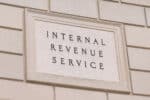Federal tax liens are a serious matter if you are behind on tax payments. The government can seize your property if you fail to pay up. You should prioritize removing a federal tax lien quickly to avoid repercussions.
This article will provide federal tax lien tips to help you catch up on taxes and remove the lien.
What Are Federal Tax Liens?
Federal tax liens are governmental claims on properties. They carry a 10-year statute of limitations. The government uses liens to target people who fall behind on tax payments.
How Do Federal Tax Liens Affect You?
A Federal tax lien does not always result in the government seizing your property. This scenario happens if you continue avoiding taxes. However, taxpayers who receive liens suffer a few setbacks.
The Federal tax lien will decimate a consumer’s credit score. A lower credit score results in higher interest rates. The low score also makes refinancing more challenging.
A federal tax lien will complicate a potential property sale. If you do not address the lien, the government will eventually take your property. They will use your property’s value as the payment for missing taxes.
Getting on an IRS Payment Plan
Paying your taxes will get the IRS off your back. However, not every consumer can cover the gap quickly. These consumers should reach out to the IRS to set up a payment plan.
You can apply for a payment plan on the IRS website. If you make three consecutive payments, the IRS may remove the lien from your record. Even then, you still need to pay off the debt.
Just like credit card debt, your unpaid taxes gain interest and build over time. Making the minimum payment is a good start. Strive to cut into the principal debt as additional funds become available.
If you cannot settle on a payment plan, you can ask for a compromise. This structure allows you to pay less of the total sum, but you shouldn’t rely on this approach.
The IRS often rejects these applications. Approved compromise applications come with several strings attached. If a compromise does not work, you can file for an appeal.
Bankruptcy: The Worst-Case Scenario
Paying down your taxes is the best approach. An IRS Payment Plan is a close second. Compromising and appealing are backup options.
The last way to remove federal tax liens is through bankruptcy. Bankruptcy is the least attractive choice. The lengthy process remains on your credit record for up to 10 years.
Declaring a second bankruptcy puts both bankruptcies back on your credit record. In this scenario, both bankruptcies remain on your record for up to 14 years. Having a bankruptcy on record will make it challenging to take out loans or find a place to rent.
Need Help with Your Taxes?
Federal tax liens frighten many consumers. They come with dire consequences and damage your credit score.
Hiring a tax professional can alleviate some of the stress that comes with paying taxes. Contact our professionals to see how we can help with your tax relief.





